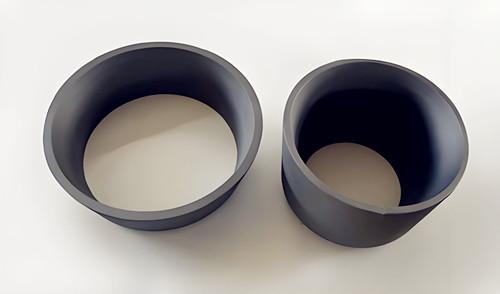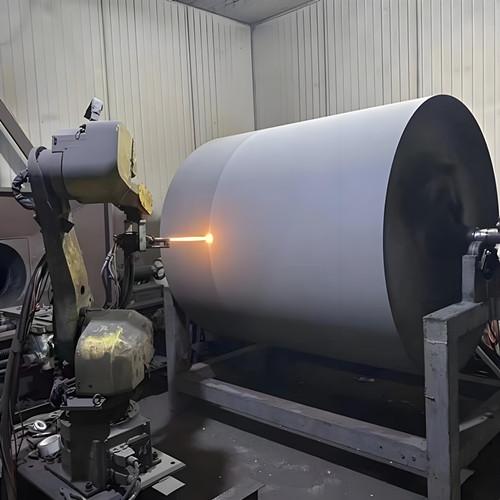Tungsten carbide surface coating treatment process
Tungsten carbide is a compound composed of tungsten and carbon with a molecular formula of WC and a molecular weight of 195.85. It possesses excellent properties such as a high melting point, high hardness, high wear resistance, and high corrosion resistance. It is widely used in tools, molds, aerospace, automotive, and other fields. Applying tungsten carbide as a coating to metal surfaces significantly improves the metal’s hardness, wear resistance, corrosion resistance, and high-temperature resistance. Currently, high-end harvesters, forage harvesters, choppers, crushers, and some cutting knives worldwide use tungsten carbide coatings to extend their service life.
I. Tungsten Carbide Coating Preparation Technology:
Tungsten carbide coatings are primarily prepared using techniques such as physical vapor deposition (PVD), chemical vapor deposition (CVD), and arc ion plating.
PVD involves heating a solid material under vacuum conditions, causing it to sublime into a gaseous state. The coating is then deposited onto the substrate surface to form a coating. Common PVD techniques include magnetron sputtering, electron beam evaporation, and arc ion plating. Chemical vapor deposition (CVD) involves decomposing a gaseous coating under a specific atmosphere, which then deposits it onto the surface of the material to form a coating. Common CVD techniques include chemical vapor deposition, thermal decomposition, and heating.

II. Characteristics of Tungsten Carbide Coatings:
Tungsten carbide coatings have extremely high hardness, generally reaching HV1200 or higher. This hardness depends on several factors:
1. Tungsten carbide content: A higher tungsten carbide content in the coating generally increases the hardness.
2.Spraying process: Different spraying processes affect the hardness of the coating. For example, supersonic velocity flame spraying can produce tungsten carbide coatings with higher hardness.
3. Post-treatment: Appropriate heat treatment after spraying can improve the coating’s microstructure and increase its hardness.
III. Spraying Techniques for Tungsten Carbide Coatings:
1. Supersonic Velocity Flame Spraying Technology
Supersonic velocity flame spraying of tungsten carbide coatings can rapidly deposit a hard, wear-resistant coating and is considered the most promising alternative to hard chrome plating. 2. Air-Assisted Supersonic Flame Spraying Technology
2. Combustion-assisted supersonic flame spraying includes two processes: supersonic oxygen flame spraying and supersonic air flame spraying. The flame temperature in this process is below 2000°C, far lower than that of conventional supersonic flame spraying. This significantly improves the coating’s bonding strength while reducing or even eliminating the oxide content in the coating. Its wear resistance, corrosion resistance, and toughness are significantly superior to those of electroplated hard chromium coatings.
3. Arc Spraying Technology
Arc spraying technology utilizes powder-cored wire and high-velocity arc spraying in a high-temperature oxidizing environment to produce tungsten carbide coatings. The resulting coatings exhibit excellent comprehensive mechanical properties, high bonding strength, high density, and excellent vibration resistance.
4. Plasma Spraying Technology
Plasma spraying technology offers excellent friction and wear characteristics, resulting in a dense structure and high bonding strength.
5. Flame Spraying Technology
During the spraying process, the powder is heated by a heat source, and more than half of it is deposited on the workpiece in a semi-molten state. Remelting is the process by which the powder coating melts on the workpiece. This coating remelting technology eliminates pores and oxide inclusions during the spraying process and creates a metallurgical bond with the metal body, significantly improving density and bonding strength, resulting in better mechanical properties for the workpiece.

IV. Tungsten Carbide Spraying Precautions:
1. Substrate Surface Pretreatment: Use mechanical methods such as steel wool, supplemented by alkaline cleaning solutions, to remove oil, rust, and other surface impurities from the workpiece. Sandblasting and electroextrusion are used to improve the mechanical bond between the coating and the substrate, achieving a surface roughness of 6.3-25. After sandblasting and rust removal, the workpiece should be sprayed promptly to prevent moisture contamination.
2. Select appropriate process parameters, including the fuel-oxygen mixture ratio, to control spraying quality.
3. Choose the appropriate delivery gas type, velocity, flow rate, delivery position, and angle.
4. Select the appropriate tungsten carbide material, including its composition, physical properties, powder form, particle size, and wire or rod diameter.
5. Choose the appropriate spraying method, including the distance between the spray gun and the workpiece, the speed of the spray gun or workpiece, the angle between the spray gun and the workpiece, and the spraying gas medium.
6. Immediately seal and heat treat the surface after spraying.
7. Safeguards should be used during spraying.
V. Price and Lifespan of Tungsten Carbide Coatings:
The price and lifespan of tungsten carbide coatings vary depending on factors such as the application, coating thickness, and preparation process. Generally, the price of common tungsten carbide coatings ranges from tens to hundreds of hours, while the lifespan depends more on factors such as the application and coating quality, ranging from hundreds to thousands of hours. In applications such as cutting tools and grinding tools, coatings are more expensive and have longer lifespans. In applications such as tractors, coatings are relatively cheaper but have shorter lifespans.
VI.Maintenance of Tungsten Carbide Coatings
Maintaining and maintaining carbide coatings is crucial for extending their lifespan. The following precautions are generally recommended.
1. Avoid excessive loads on the coating, which may cause surface damage such as cracking and peeling.
2. Avoid contact with chemicals. Although the coating has good corrosion resistance, it should still be kept away from acids, alkalis, and other chemicals to avoid affecting the coating’s stability and mechanical properties.
3. Avoid high temperatures. Although the coating has good heat resistance, it should still be kept away from excessive temperatures to avoid affecting its hardness and stability.
4. Regularly clean the coating surface to prevent the accumulation of dust, dirt, and other impurities that could affect its performance.
5. Maintain a smooth surface to prevent mechanical damage such as scratches and abrasions that could affect its performance.
Our company is among China’s top ten tungsten carbide products manufacturers. Should you require cemented carbide products, please contact us.
